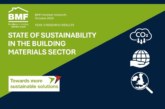
Timber and panel import volumes were 0.6% higher in Q1 2025 than they were in 2024, reaching 2.26 million m3 – the first Q1 growth on the previous year the sector has seen since 2021, according to the latest TDUK figures.
Following the well-documented instability seen between 2020 and 2022, rates of growth and decline have since steadied, with the overall 0.6% growth in Q1 2025 resulting from the following changes in monthly volumes. The start of the year was challenging, with volumes falling 1% in January 2025, and 9% in February, but a 13% increase in volumes in March 2025 resulted in cumulative growth for the quarter as a whole.
Many of the main timber and panel products sectors expanded during Q1, with strong growth in volumes realised by OSB, Plywood and Engineered Wood Products (EWP). Softwood imports also grew by nearly 2%. The reduction in MDF volumes seen in Q1 2025 is being measured against a strong performance in Q1 2024.
As recently reported by TDUK, sawn and planed pine import volumes increased strongly in the early months of 2025. Pine volumes were 32% higher in Q1 2025 than in Q1 2024 – an increase of more than 95,000m3. Most of this increase came Sweden, but good import growth was also recorded from Norway, Germany, the Netherlands, and Estonia. Average prices of imported pine also rose by 4% in Q1 2025. Meanwhile, whitewood import volumes were 10% lower.
Total softwood import values rose by 12% year-on-year, supported by a 2% increase in volume and a 10% rise in average prices to £268/m³. Planed softwood values increased by 9%, while sawn softwood jumped 16%. Notably, redwood values soared by 37% and mixed species by 24%, while whitewood values remained flat.
Hardwood import volumes declined by 2.8%, though key suppliers like the USA (+8%) and France (+4%) expanded their shipments. Tropical hardwoods grew nearly 3% in volume, led by Cameroon (+17%) and the DRC (+58%). In contrast, temperate hardwood volumes fell by 4%, driven by an 18% reduction from Estonia. Average hardwood prices rose by 4.5% to £811/m³, with mixed species showing the sharpest rise at 11%.
Plywood imports were mixed; hardwood plywood volumes edged up 1.1%, led by China and Malaysia, though values fell 1% due to lower prices. Softwood plywood values surged by 34% on the back of a 25% rise in volume and a 7% price increase, with Brazil supplying 80% of UK imports.
Particleboard imports were stable in volume, but saw an 11% drop in value due to a 12% fall in average price. Supply shifts included losses of -25% from Portugal and gains from Spain (+12%) and Luxembourg.
Overall, Q1 2025 exceeded the sector’s low expectations, with stronger-than-expected volumes and a clear upward movement in pricing, especially across softwood and softwood plywood.
The latest Construction Products Association (CPA) forecast suggests that the UK new housebuilding and housing repair, maintenance and improvement (RMI) markets will grow over the next three years. The Spring CPA forecast has reduced its growth rate since its previous Winter forecast, but despite the uncertainty, growth of 2.8% is still forecast in 2025, with a more than 4% increase for 2026 and 2027.
TDUK Head of Technical and Trade, Nick Boulton, said: “While challenges remain across the construction landscape, it’s encouraging to see import growth and forecasts pointing to improvements in the housing and RMI sectors – both key markets for timber. After a difficult few years, signs of recovery in new housing and the hope of a continued momentum in RMI give cause for cautious optimism but we fear may not come soon enough for some within the sector.
“Softwood imports have closely mirrored housing output over the long term, and with projected market growth through to 2027, the outlook for timber demand appears positive. For TDUK members, this offers a valuable opportunity to plan for gradual but sustainable growth in line with evolving market confidence and construction activity.”
The full TDUK timber and panel products import report contains full details of volumes right across the sector, broken down by timber type and supply country. TDUK members can sign in and read the full report on the TDUK website.
Timber Development UK states it is the largest, most comprehensive timber supply chain body in the UK, and remains the single source for knowledge on all things timber, from sawmill to specifier and everything in between.










